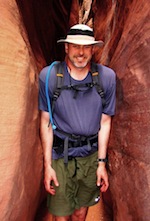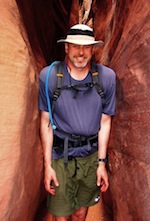Jack Nicklaus is on the short list of the greatest golfers of all time, and I love his evocative quote, “before every shot, I go to the movies.” He never hits the ball (not even in practice) without first having a very sharp, focused picture of it in his head. He constructs a detailed image of the green, every dimple on the ball, the trajectory and the swing he needs to make his visualization a reality. In essence, he mentally executes the motor action in uber-high resolution prior to performing the physical shot.
Motor imagery has been an integral component of sport probably as far back as some hairy Neanderthal chucking a spear toward a mammoth. Aspects of feed-forward imagery are likely tied to our survival. A bad toss = no mammoth burgers for dinner, or worse, maybe Neanderthal as the first course. Imagery has also made a resurgence in rehabilitation for folks with persistent pain states and complex movement impairments. In neurologic rehabilitation, much of the press has focused on the use of explicit motor imagery as a component of post-stroke rehab. However, there are likely benefits for people with other diagnoses as well. What about motor imagery following spinal cord injury? Superficial consideration might lead one to reject the idea, as the lesion is more or less a blockade between the brain and the body, so how could “going to the movies” possibly help if the injured cord remains?
Murielle Grangeon and colleagues recently added fuel to this question. They worked with a fellow eight months post complete C6 spinal cord injury (SCI) who had concluded his initial rehab program and plateaued in his functional progress. They developed a reach-and-grasp training progression emphasizing motor imagery practice supplemented with minimal amounts of physical practice. The use of some physical movement to augment imagery seems to improve imagery capability in patients post-stroke – perhaps with post-SCI as well? In an attempt to quantify imagery ability they measured electrodermal sympathetic responses, examined congruence between time to execute a reaching task compared to the same task using imagery. They additionally had the patient self-assess his imagery ability using the Kinesthetic and Visual Imagery Questionnaire. After 15 sessions the subject demonstrated significant improvement in reaching movement quality, reaching speed, as well as other standardized tests used to assess upper quarter motor function. These gains were retained at a 3-month follow-up assessment. As if those results weren’t good enough, they were also attained with significantly less mental practice as some previous trials in a post-stroke population.
Although the results described in the case are both exciting and encouraging, I find it interesting that imagery has not had more formal research attention in a SCI-population. As with other disease and injury states, altered exteroceptive input and shifts in motor capabilities also re-shape the brain’s representation of the body (e.g. body schema or cortical-body matrix). It makes sense that adding a solid dose of motor imagery to conventional movement-based therapy might assist in tipping the scales toward greater functional improvement. This is particularly true for improving function above the level of injury, but also below the injury level for incomplete injuries. Patients often can elicit a flicker of muscle activity, but then “lose the connection” and show inconsistent ability to repeat the contraction. This scenario would be a great indication for adding formal motor imagery to the game plan. It is also interesting that most of the people post-SCI have already “gone to the movies” many times before the concept is formally introduced… almost like it is intuitively wired to their coping, physical and mental recovery and survival. Maybe it is time for “conventional” rehab to fire up the popcorn-maker and accompany a few more patients to the theatre.
About Steve Schmidt

Steve is a physical therapist practicing at Kaiser Foundation Rehabilitation Center in the San Francisco bay area. His professional interests include pain science education, manual therapy and management of patients experiencing complex neurologic problems. When he is not chasing after his kids, fly-fishing, or cooking backyard produce, he’s busy teaching for the Neuro Orthopaedic Institute, several orthopaedic fellowship programs or serving as adjunct faculty for Samuel Merritt University. Steve has a Masters of Manipulative Physiotherapy (University of South Australia), is a fellow in the AAOMPT, a board-certified specialist in orthopaedic physical therapy, an instructor with the International Proprioceptive Neuromuscular Facilitation Association, and is a really nice guy.
References
Grangeon M, Revol P, Guillot A, Rode G, & Collet C (2012). Could motor imagery be effective in upper limb rehabilitation of individuals with spinal cord injury? A case study. Spinal cord, 50 (10), 766-71 PMID: 22508537
Grangeon M, Charvier K, Guillot A, Rode G, & Collet C (2012). Using sympathetic skin responses in individuals with spinal cord injury as a quantitative evaluation of motor imagery abilities. Physical therapy, 92 (6), 831-40 PMID: 22403090
Henderson LA, Gustin SM, Macey PM, Wrigley PJ, & Siddall PJ (2011). Functional reorganization of the brain in humans following spinal cord injury: evidence for underlying changes in cortical anatomy. Journal of neuroscience, 31 (7), 2630-7 PMID: 21325531
Moseley GL, Gallace A, & Spence C (2012). Bodily illusions in health and disease: physiological and clinical perspectives and the concept of a cortical ‘body matrix’. Neuroscience and biobehavioral reviews, 36 (1), 34-46 PMID: 21477616



